 The magnitude 5.2 earthquake that rocked the Midwest on Friday was felt from Kansas to Georgia. Aftershocks could continue for months at this strange seismic zone at the nation's center and even trigger another big quake, a geophysicist said.The quake occurred on a northern extension of the New Madrid fault, about 6 miles north of Mt. Carmel, Ill.The New Madrid fault was responsible for devastating quakes in the Mississippi Valley in 1811 and 1812.With that in mind, the Friday quake and its aftershocks may be raising the blood pressure of some residents and scientists.For decades, scientists have debated whether and when the underlying fault could generate another temblor of similar and deadly strength."I think we saw a window to this possibility today in the Wabash Valley," said geophysicist Allessandro Forte of the Université du Québec à Montréal, who has studied the region's seismicity."It's to the north of the New Madrid seismic zone, but given the strength of crust, the stress can be distributed great distances," he said. "It's not clear if we could see something in the next few years or even next few months, I would say."The last earthquake in the region to approach the severity of Friday's temblor was a 5.0 magnitude quake that shook a nearby area in 2002, according to the U.S. Geological Survey.An event actually surpassing today's magnitude last occurred in 1968, a magnitude 5.3 quake that was felt in 23 states and in Ontario and Boston, said Forte.The magnitude scale is logarithmic so a change of 0.1 or 0.2 makes a big difference in terms of energy output."The $64,000 question is what this earthquake portends for the future," Forte said. "The answer is I'm afraid it can go either way."
The magnitude 5.2 earthquake that rocked the Midwest on Friday was felt from Kansas to Georgia. Aftershocks could continue for months at this strange seismic zone at the nation's center and even trigger another big quake, a geophysicist said.The quake occurred on a northern extension of the New Madrid fault, about 6 miles north of Mt. Carmel, Ill.The New Madrid fault was responsible for devastating quakes in the Mississippi Valley in 1811 and 1812.With that in mind, the Friday quake and its aftershocks may be raising the blood pressure of some residents and scientists.For decades, scientists have debated whether and when the underlying fault could generate another temblor of similar and deadly strength."I think we saw a window to this possibility today in the Wabash Valley," said geophysicist Allessandro Forte of the Université du Québec à Montréal, who has studied the region's seismicity."It's to the north of the New Madrid seismic zone, but given the strength of crust, the stress can be distributed great distances," he said. "It's not clear if we could see something in the next few years or even next few months, I would say."The last earthquake in the region to approach the severity of Friday's temblor was a 5.0 magnitude quake that shook a nearby area in 2002, according to the U.S. Geological Survey.An event actually surpassing today's magnitude last occurred in 1968, a magnitude 5.3 quake that was felt in 23 states and in Ontario and Boston, said Forte.The magnitude scale is logarithmic so a change of 0.1 or 0.2 makes a big difference in terms of energy output."The $64,000 question is what this earthquake portends for the future," Forte said. "The answer is I'm afraid it can go either way."Stress relief or hair trigger?
One scenario predicts that some stress is relieved on the local faults where this earthquake occurred and will cool things down for a few decades. The other scenario is not so happy."There is the possibility, and we can only see over next few months what will happen, that the redistribution of stress on neighboring faults might trigger further earthquakes, and we can only guess as to whether they'll be equally large as today's earthquake," Forte said.Aftershocks from the Friday quake will continue for several weeks, maybe months, he said. Already, there have been many, of magnitudes in the range of 2 and 3, radiating outward from the epicenter."If we are seeing a propagation outward of stress changes after today's 5.2, which was a big one, and those stress changes finally come up on a fault which is on a hair trigger and ready to go, those small changes are sufficient to generate another big one on a fault which is locked and ready to go," Forte said.
How much risk?
Recent estimates have downgraded the risk of a large earthquake on the New Madrid fault.In the 1980s, scientists said there was a 90 percent chance of a magnitude 6 or 7 temblor occurring in this area within the next 50 years.A 2007 USGS fact sheet, however, said there is only a 25 percent to 40 percent chance of a magnitude 6 or larger there in the next 50 years.However, a team that includes Michael Ellis of the University of Memphis estimated in 2005 that the odds of another 8.0 event in the region within 50 years are between 7 and 10 percent.These debates about the New Madrid fault are far from resolved, Forte said, with some saying the accumulated stress in area faults is weakening while others say it is not going to dissipate any time soon."This is not exactly a well-defined science as yet," he said.Forte is pessimistic, based on his research on an ancient, giant slab of Earth called the Farallon slab that started its descent under the West Coast 70 million years ago.According to one theory, the Farallon slab is now is causing mayhem and deep mantle flow 360 miles beneath the Mississippi Valley, where it effectively pulls the crust down an entire kilometer (.62 miles).[The other, not necessarily contradictory theory is that the lower Mississippi Valley is the site of a failed rift, a crack that appeared in the North American tectonic plate hundreds of millions of years ago and never fully healed.]"The stresses from the sinking Farallon slab are not going to disappear any time soon," he said.J. David Rogers agrees. The geological engineer at Missouri University of Science and Technology says Midwestern earthquakes are potentially more powerful than California quakes.
Shakier situation
Unique geology in the Midwest increases the shaking intensity of earthquakes because seismic energy moves through the dense bedrock at very high speeds, then becomes trapped in soft sediments filling river channels and valleys, Rogers said.Rogers and some of his graduate students have been modeling synthetic seismic events in the New Madrid region.Most of their scenarios are modeled after an 1895 earthquake with a magnitude of 6.4 that was centered in Charleston, Mo.The preliminary results are sobering, said Rogers.Data indicates ground shaking would be magnified about 600 percent within the flood plain of the Missouri River, a development that would cause most of Missouri’s existing long-span bridges to collapse."You don't even need a really big earthquake to do significant damage in Missouri," Rogers says. "It could happen tomorrow."The relative quake risk of the New Madrid seismic zone is a great debate that might be driven in part by competition for grant money, Forte said.Those scientists who work on West Coast quakes have an incentive to claim that the research money should be spent on that region, while the central continent-focused researchers obviously are more invested in funds coming their way.
http://www.foxnews.com/story/0,2933,351771,00.html
As in the days of Noah....

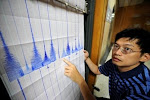
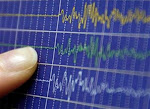
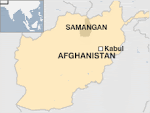







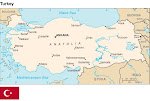
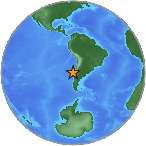




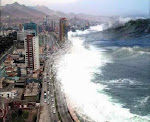

.jpg)


.bmp)
No comments:
Post a Comment